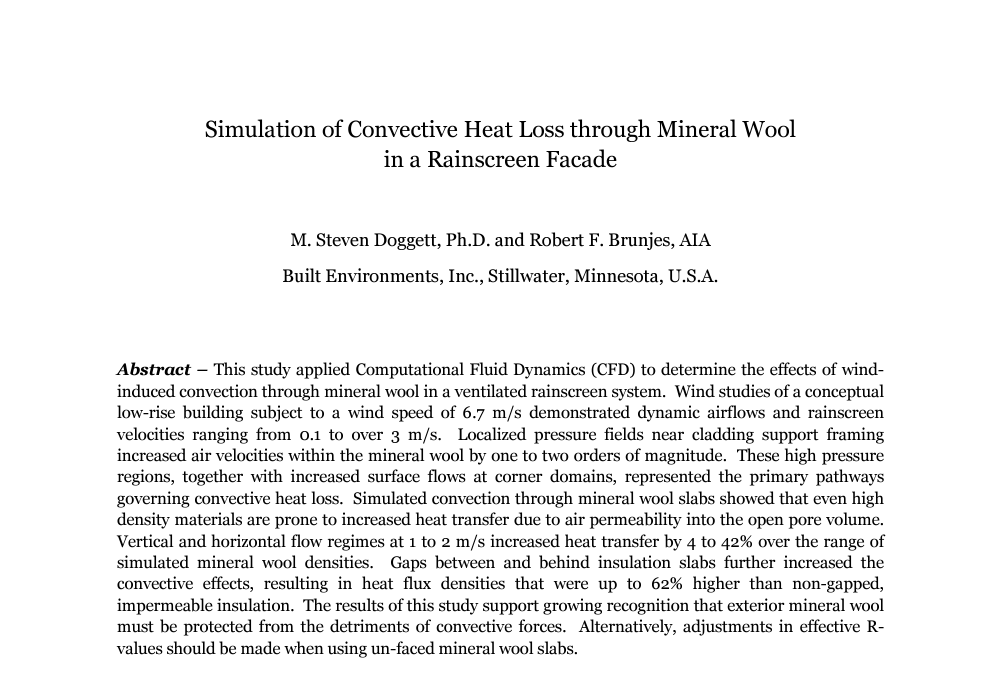Tags: #architecture #buildingdesign #buildingenclosures #buildingenvelopes #buildingmaterials #buildingproducts #buildingscience #materialsscience #mineralwool

ABSTRACT: This study applied Computational Fluid Dynamics (CFD) to determine the effects of wind-induced convection through mineral wool in a ventilated rainscreen system. Wind studies of a conceptual low-rise building subject to a wind speed of 6.7 m/s demonstrated dynamic airflows and rainscreen velocities ranging from 0.1 to over 3 m/s. Localized pressure fields near cladding support framing increased air velocities within the mineral wool by one to two orders of magnitude. These high pressure regions, together with increased surface flows at corner domains, represented the primary pathways governing convective heat loss. Simulated convection through mineral wool slabs showed that even high density materials are prone to increased heat transfer due to air permeability into the open pore volume. Vertical and horizontal flow regimes at 1 to 2 m/s increased heat transfer by 4 to 42% over the range of simulated mineral wool densities. Gaps between and behind insulation slabs further increased the convective effects, resulting in heat flux densities that were up to 62% higher than non-gapped, impermeable insulation. The results of this study support growing recognition that exterior mineral wool must be protected from the detriments of convective forces. Alternatively, adjustments in effective R-values should be made when using un-faced mineral wool slabs.